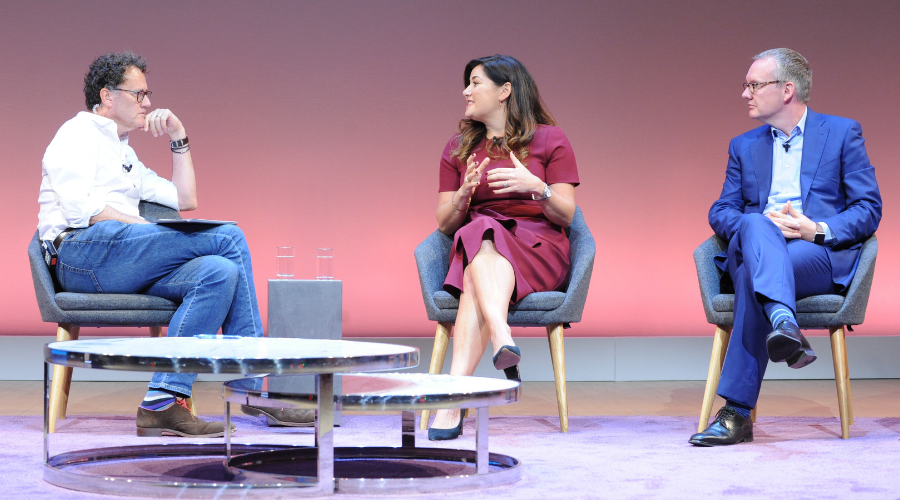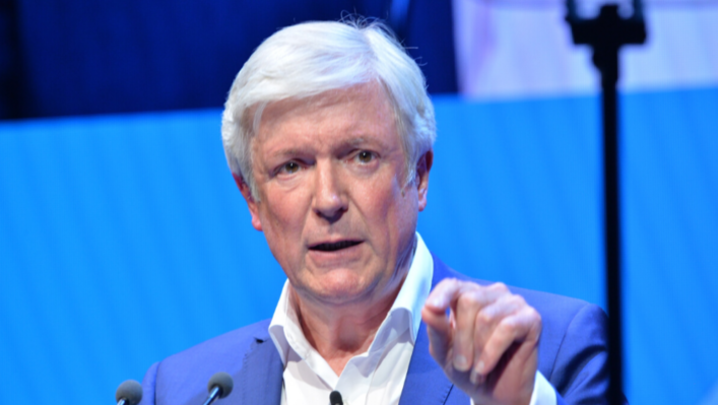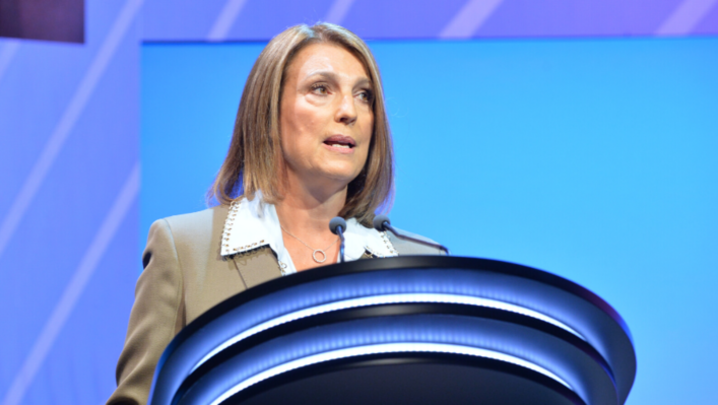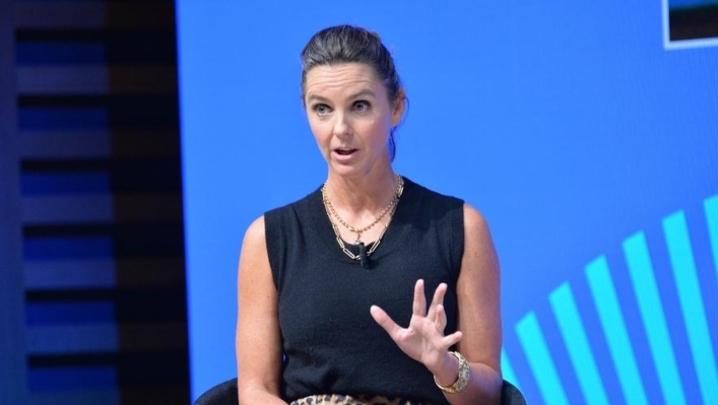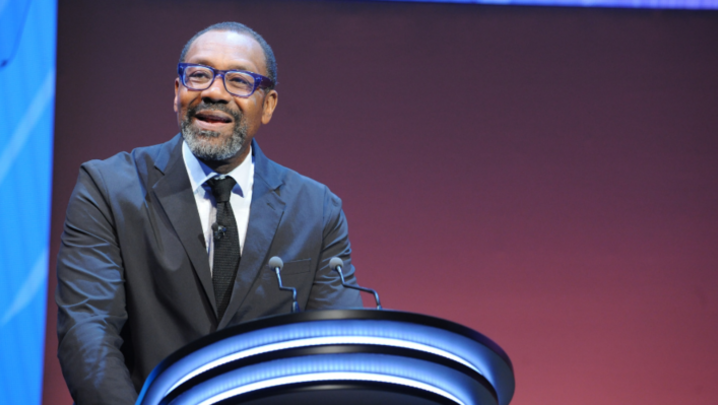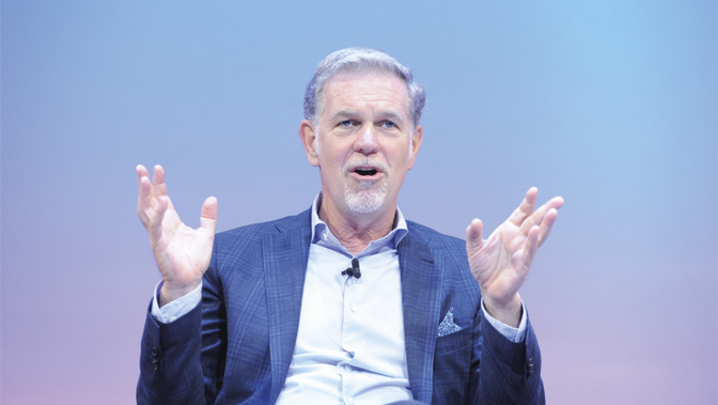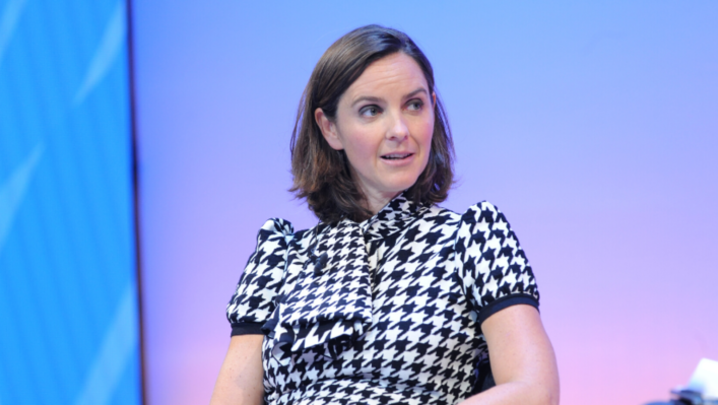Can streamers funded by subscriptions or ads coexist – or will one model come to dominate?
Will the future of streaming be defined by SVoD (subscription video-on-demand) or free, advertising-funded video-on-demand – or can they both prosper? Those were the big questions addressed by BritBox launch director Reemah Sakaan and Viacom International Media Networks chief David Lynn.
Speaking on the day that the “best of British” SVoD announced a deal with Channel 5, Sakaan was asked by session chair Wayne Garvie how she was going to “persuade my mum and dad to spend £5.99 a month on BritBox”?
She said, in the first instance, that it was important to show customers what they could expect to see, so advertising and marketing were key.
"This isn’t a cheap business to get into – it’s why it’s taken us a long time to get here"
Sakaan explained: “We’ve got a fantastic armoury of rights… also lots of new things.” She would not talk budgets but said: “This isn’t a cheap business to get into – it’s why it’s taken us a long time to get here, aside from our partnerships and the regulation we face. But we’re taking it really seriously and we’ve got brilliant content budgets, both for acquired [and] original programming… which takes quite a long time to build.”
Original programming would be coming on stream next year, said Sakaan, but was unlikely to be present “at launch”, which would feature a mix of catalogue shows, exclusives and premieres.
Garvie asked if she was worried about the move to put shows on iPlayer for a year. Sakaan replied: “It’s clear what we’re about – some of it is much-loved classics from the past… multi-series box sets… then, things coming out of the commercial window, whether that’s 30 days for the commercial broadcasters [or] iPlayer’s new one-year [period].
“We think it makes loads of sense to close up that ecosystem. The most frustrating thing people talk to us about is: where does everything go?… It kind of disappears… [they] have to buy a single episode and download it.”
As Sakaan reported to ITV director of television Kevin Lygo, did it mean that ITV paid more for content to get the rights, asked Garvie. “We sit in a brilliant position to have conversations with producers and distributors about the full life cycle of a show. Of course, we pay market rates and for our usage. There are also huge benefits doing that deal upfront,” replied Sakaan.
Another new entrant to the UK market is Viacom’s advertiser-funded streamer Pluto TV, which offers free TV with the catchline: “No bills, no contract.… Pluto TV brings back the linear-TV you love.”
Garvie described it as “great for an old bloke like me… it’s like a linear-TV experience, quite old-fashioned… [but] is it going to work for anyone under 50?”
However, Lynn revealed that it had “the lowest age profile of any service. More than 50% of the audience is aged 16 to 36 in the US market. It’s easy to use, you download the app and it’s streaming video from that moment.”
Viacom has worked hard on the distribution and Lynn said it was now available on all connected TVs and mobile services. He added that Viacom was working with its satellite partners to make it part of their services.
“It’s a lean-back experience,” he explained, and a place that, particularly in the US, very few were playing in, making it, “the biggest in the free-viewing space”.
He continued: “It’s very differentiated from a lot of the other offerings in the marketplace.… Pluto is different in that, first of all, it’s live linear-TV. Second, it’s advertising-based. Third, it has channel brands. So it’s differentiated [from] what’s happening in the rest of the market and is catching on in the US.”
Lynn said that, when Viacom bought Pluto in January this year, it had an average of 12 million users. In six months, that had grown to a monthly average of 18 million. Explaining its success, he said: “We believe that curation of channel brands is something that’s valued by the consumer.”
Garvie described some of its current content, such as Ireland’s Greatest Robberies, as “a bit McDonald’s to Apple’s Nobu”.
Lynn said content for the UK version was still being worked on, but pointed out that, in the US, the service had 200 channels and 165 different content partners, and was planning to roll out internationally having already done deals with mobile and Fire TV. But there were no plans to make original shows.
Both Sakaan and Lynn agreed that channel brands were important to help viewers navigate the vast acreage of content, with an estimated 260 streaming services in the US alone.
Lynn explained the value of channel brands: “People find it difficult, despite all the algorithms, finding the next thing they want to watch on SVoD services. That’s one of the advantages of our curated service on Pluto. We’ve done research on this: 83% of people are more likely to watch content if it [is] a channel brand… people are finding it difficult to judge what they should watch next.”
There was a lot of “talk of aggregation and subscription fatigue” at the moment, but “sub-tigue” was not hitting BritBox in the US, claimed Sakaan, who said that “the second wave of subscribers coming into SVoD are more like the audiences we know”.
Viewers these days were probably facing “more [of] an economic equation”, she agreed, but calculated that, “if you took Netflix, Amazon, Now TV and BritBox, [and] even if you had Apple TV+ and Disney+, it would still collectively be half the price of a full-fat [pay-TV package]”.
When Garvie pointed out that none of these services made money, “they are loss-makers”, Sakaan countered: “BritBox in the US is ‘washing its face’ after two years, so absolutely not. These are long-term strategic plays.”
But she admitted that there was “a lot of pressure on pricing and a lot of price inflation in the rights market”.
‘People perhaps have an appetite for a lot more subscriptions’
Inevitably, there was churn in any subscription business, but Sakaan said BritBox was learning how to manage customer acquisition and retention.
Lynn said: “There are a lot of people moving into the industry at the moment and we’ll see how that plays out.… I think that you’re going to end up with several different types of service. People perhaps have an appetite for a lot more subscriptions than [has been] recognised before.
“Ultimately, it’s about content and [especially] premium content, and that’s why Viacom merging with CBS puts us in a strong position… in an increasingly competitive market. We have 750 series in production across the two companies at the moment.”
Garvie said he suspected that, when the Cambridge session was originally designed, the idea was that “there was going to be a punch-up” between SVoD and ad-based VoD. But he thought he knew the answer he was going to get when he asked the pair: “Which is the better one, which is going to survive?”
Lynn responded first: “Both – I see it as market segmentation. You’ve got premium services, you’ve got mid-tier services and you’re got free services.” He pointed out that the birth of Sky didn’t lead to the death of free TV.
Sakaan agreed: “Linear-TV, SVoD and AVoD will exist for a very long time.”
Session 15, ‘You gotta have a stream’, featured: Reemah Sakaan, group launch director, BritBox; and David Lynn, President and CEO, Viacom International Media Networks. It was chaired by Wayne Garvie, President, international production, Sony Pictures Television, and produced by Vivek Sharma. Report by Tara Conlan.

